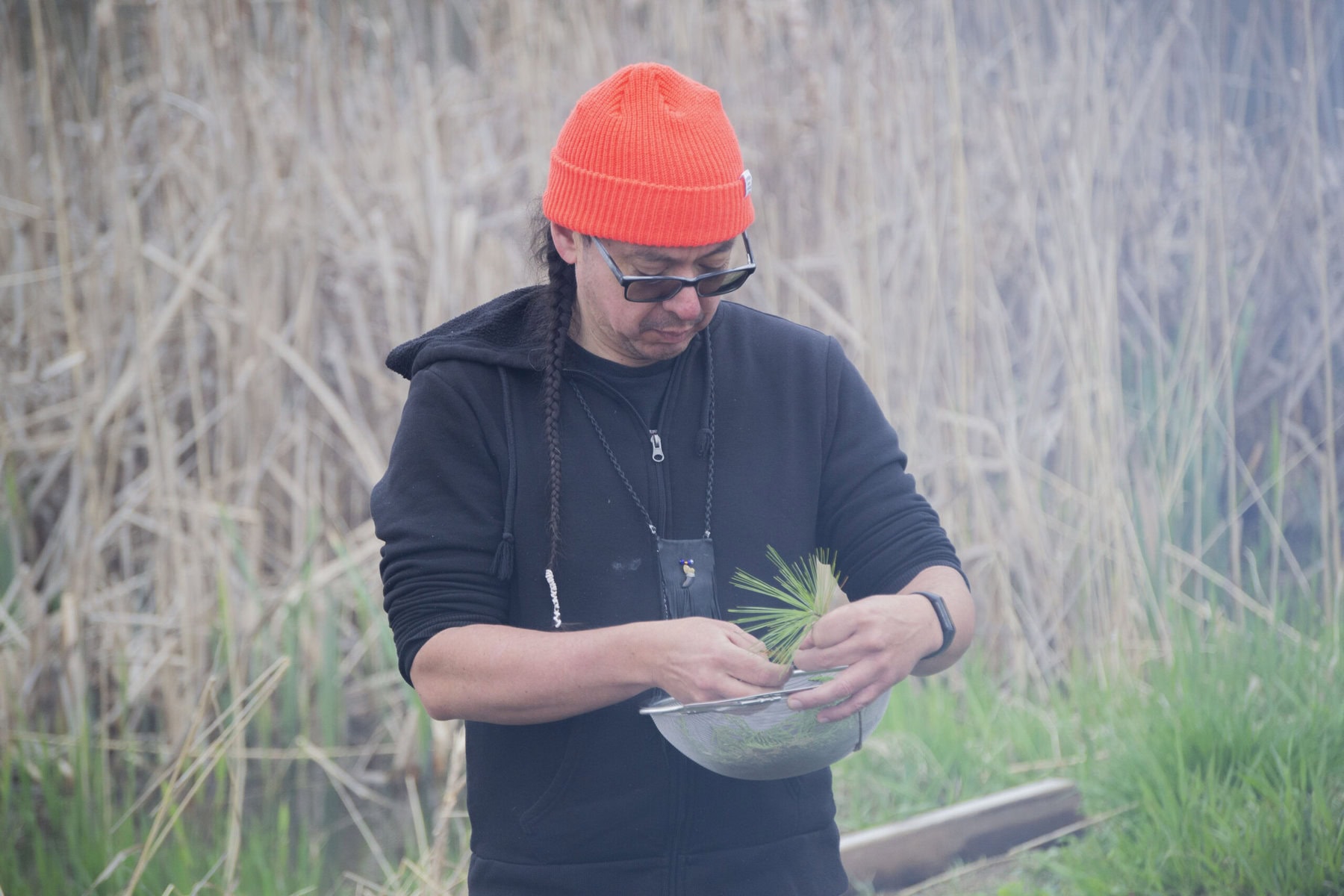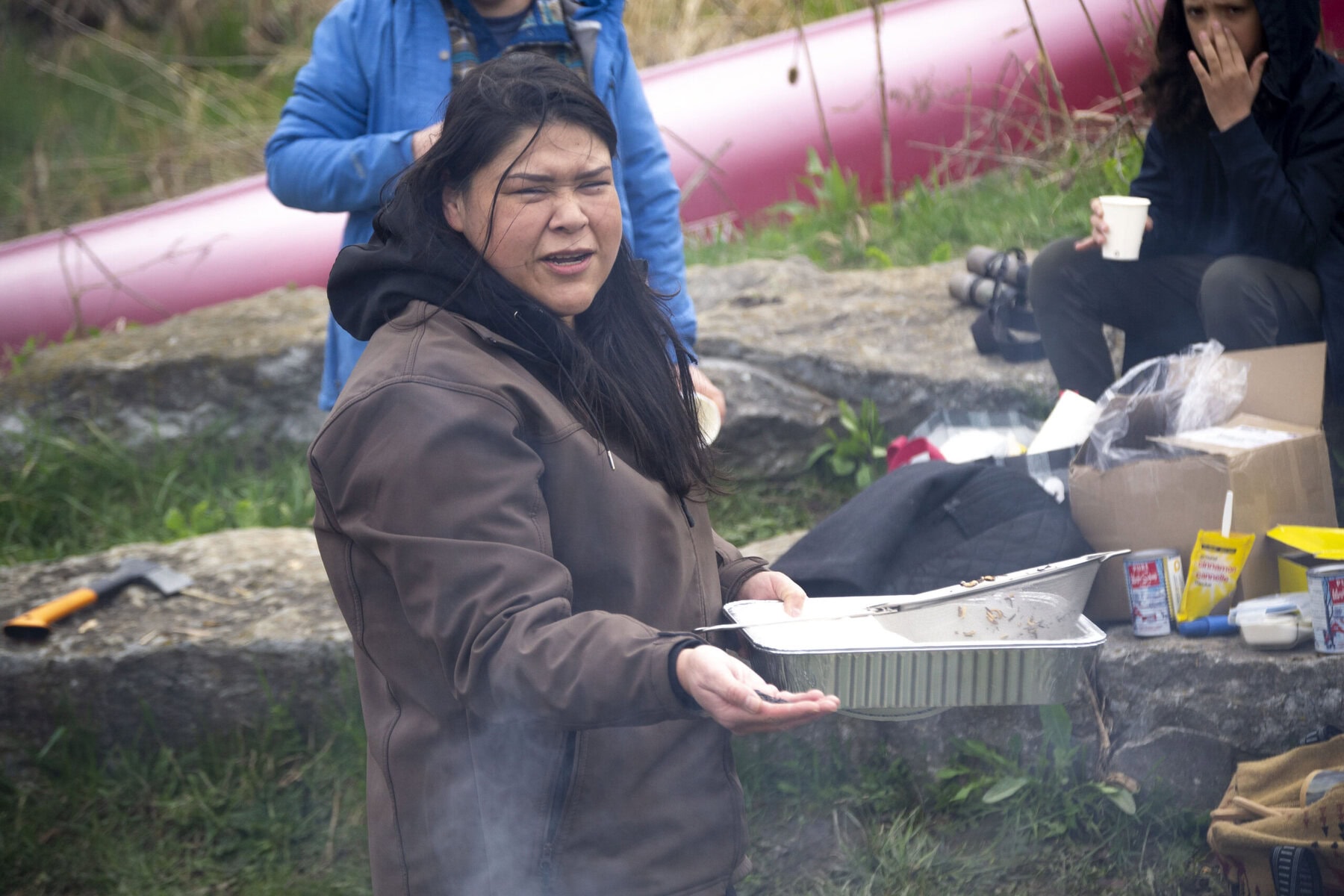Nature lovers came together on Saturday during Niagara College’s ninth annual BioBlitz to learn more about the wildlife and vegetation that occupy the school’s backyard — which has been on this land for hundreds of years.
Attendees got to explore the Niagara-on-the-Lake campus’ grounds and all of the plants, insects and animals found in the UNESCO-designated World Biosphere Reserve.
The entire day, which ran from 8 a.m. to 4 p.m., included several hikes, lunch and an Indigenous cultural exchange led by Aria D’alimonte, Sandra Mandamin and Karl Dockstader of the college’s Indigenous education department.
A crowd gathered around the fire for an hour as Dockstader, Mandamin and D’alimonte shared traditional recipes and stories.
Attendees had the chance to try freshly brewed cedar tea after they helped harvest cedar leaves from their surroundings. They also popped their own wild rice with a choice of toppings.
While they shared this food, Dockstader told stories of their properties and histories, including one of how cedar tea helped cure European settlers of disease — which, he said, included explorer Jacques Cartier and his crew.
“When he came to these territories, his crew was about to die of scurvy, a disease that they were not familiar with,” he said.
“His crew was about to pass away, so the Indigenous people in those territories went and prepared either cedar tea or white pine tea for these explorers — and magically, it seemed to the explorers, they were cured of their illness.”
Now, it is more common knowledge that that cedar tea is high in vitamin C, the vitamin necessary in curing scurvy, he said.
“It’s almost like Western medicine is catching up to Indigenous ways of knowing,” Dockstader said.
After the presentation, many stuck around to chat with Dockstader, D’alimonte and Mandamin.
Clara Nogueira is an environmental management student at the NOTL campus and moved to Canada from Brazil for her studies.
It was interesting for Nogueira learn about Indigenous culture so openly, she told The Lake Report, compared to how things are back home in Brazil, where there is also an Indigenous population (1.69 million people, according to 2022 government census numbers).
“Brazil has a huge community, but the difference is that here there are more actions to protect the communities, while in Brazil there are basically no efforts,” she said.
It’s very frustrating.”
This year’s cultural exchange marked the Indigenous education department’s second year partnering with BioBlitz.
“We’re bringing together scientists, community members and our students,”said Taryn Wilkinson, the college’s sustainability manager. “The goal at the end of the day is to learn about the outdoors, what we have on campus and also to identify species.”
When species are identified, she added, the college will have a better idea of what is on campus grounds, allowing it to make better decisions about how the space is used and increase respect for the environment.
Nogueira said she enjoyed several aspects of the day’s cultural exchange.
“I love that they gave us different cultural aspects of their culture while also explaining the dance and the food and the tea — I loved it.”
The goal of each presentation, Dockstader said, is to provide a space for people to learn.
“I think the line that has been impressing upon people is learning from Indigenous people — not learning about Indigenous people,” he said.













